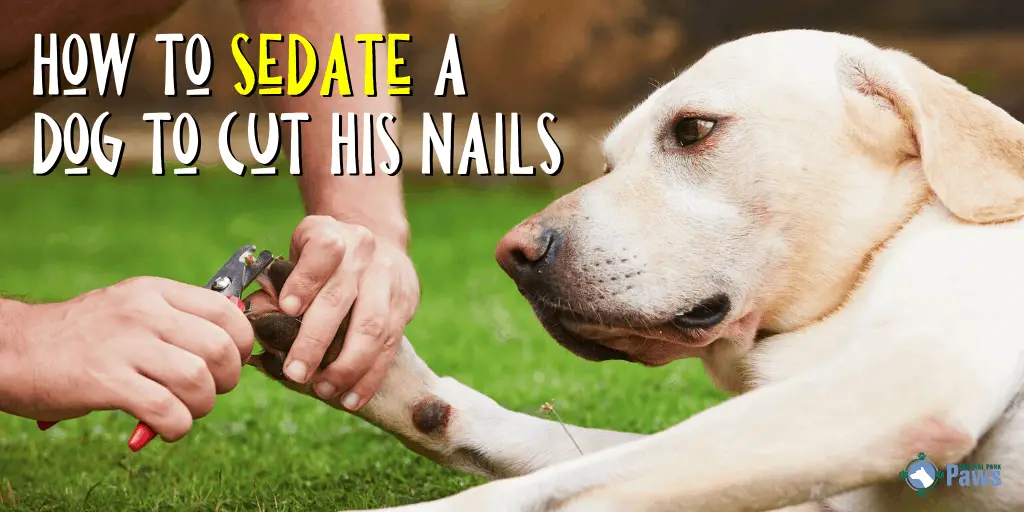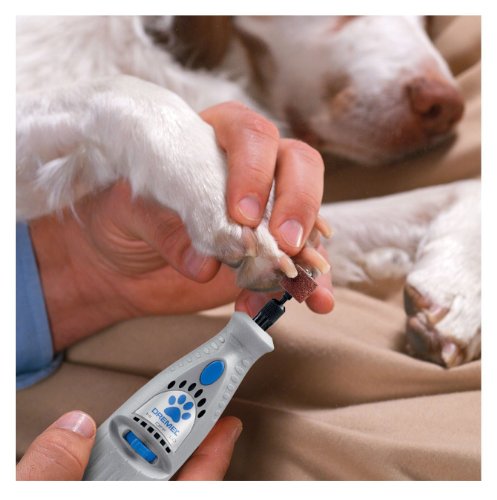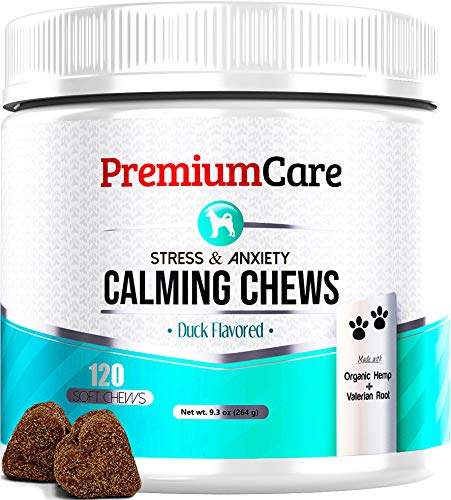People often think dogs are happy animals that will go along with anything.
It’s true that dogs are some of the most cheerful pets I’ve ever seen, but they definitely have strong opinions on what they like and dislike.
When I first tried to cut Maggie’s nails at home, she freaked out and stayed out of reach until I put the clippers away.
Since then, I’ve trusted the groomers with her nail care, but it’s way more expensive than doing it on my own (learn how groomers cut dog nails here).
If you’re one of the many people thinking the same thing about your anxious dog, read on to learn how to sedate a dog to cut their nails and if it’s right for your furry friend.
Should You Sedate Your Dog Before Trimming Their Nails?
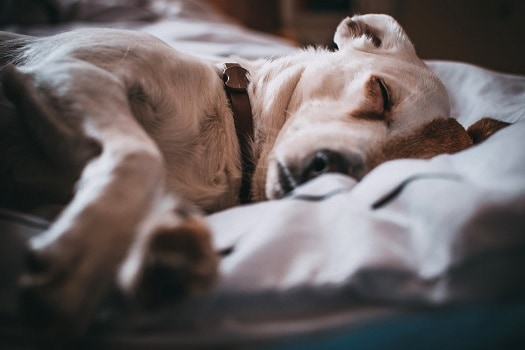
It might make you nervous to think about sedating your dog.
The term is often only used when dogs go to sleep for major surgeries, but it happens for nail treatments all the time.
Here are a few pros and cons that will clear things up for you.
Pros of Sedation
The biggest benefit to sedation is that it makes you and your dog safer.
Dogs who resort to self defense mode when nail clippers appear shouldn’t have the ability to fight you when sharp objects are involved.
You’ll also get better results when you sedate your dog.
You can hold their paws at any angle and get a close look so you don’t snip the quick. And if that happens anyway, you can bandage their toe before they wake up.
You should consider sedating your dog if they react violently to nail clippers or show signs of an anxiety attack when they see them in your hand.
Your dog might be having an anxiety attack if they show symptoms like[1]:

- Excessive drooling
- Uncontrollable bladder or bowel movements
- Acts of aggression
As long as you know what you’re doing when you sedate your dog, they’ll have a safe and enjoyable experience.
Related: How to Cut an Aggressive Dog’s Nails
Cons of Sedation
When medication is involved, there are always a few risks for the person or animal taking them.
You might not prefer to sedate your dog if:
- You’re not comfortable determining the dosage
- They’ve had bad anesthetic experiences before
- You’re worried about the sedation interfering with health problems
Ask your dog’s vet about any questions you have regarding your dog’s health, current prescriptions or anesthetic history.
They’ll help you figure out if sedation is right for your dog.
When You Shouldn’t Sedate Your Dog
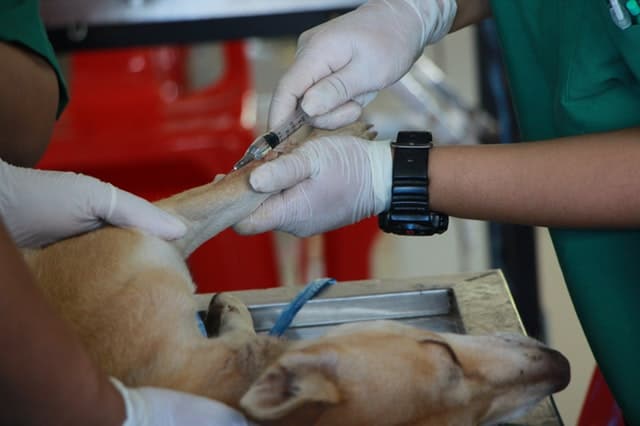
Here are a few other dangers that could occur if you sedate your dog.
Potential Dangers
Some people believe that sedation and anesthesia aren’t the same thing, but they are[2].
They’re both forms of general anesthesia, which puts your dog in a deep sleep.
Dogs can react badly to forms of anesthesia and experience symptoms such as[3]:
- Low blood pressure
- Slow heart rate
- Shallow breathing
You can always call or visit your dog’s vet to talk about these concerns, especially if your dog already has issues with their heart or blood pressure.
Sedating a Dog for Nail Cutting
Now that you’ve considered the pros and cons to sedating your dog, here are a few options you can try at home.
Give Them Benadryl
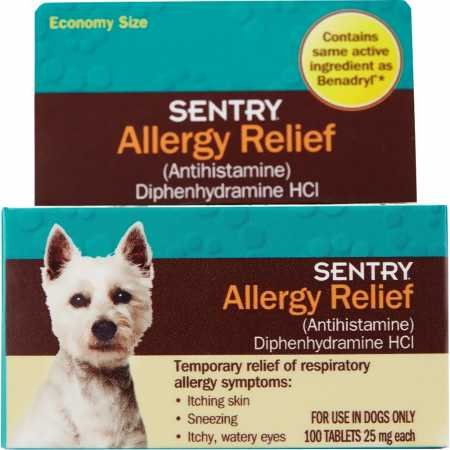
It’s not meant for heavy daily use, but will greatly help ease your dog’s nerves when it’s time to trim their nails.
The Merck Veterinary Manual advises that dogs take 2-4 milligrams of Benadryl per kilogram of their weight[4]. This may mean you break a pill apart into a smaller piece.
Never give your dog a time-release Benadryl capsule or a liquid version that contains alcohol[5].
Potential side effects include:
- Dry mouth
- Increased heart rate
- Rapid breathing
As long as you give your dog a careful dosage, Benadryl should help them doze off before their next manicure.
Let Them Try Dramamine
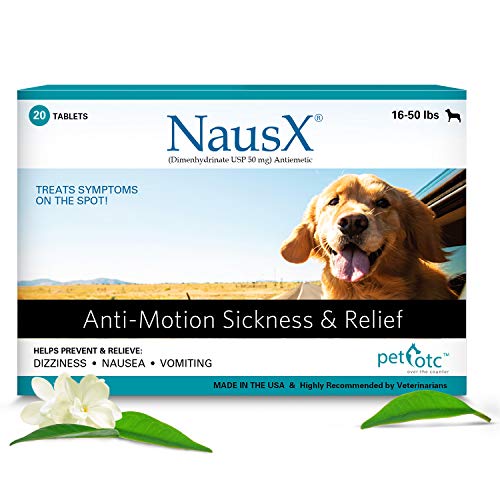
It’s always good to call your vet and ask for their recommended dosage, but dogs can generally take 1.9-3.6 milligrams per pound[6].
Your dog may experience the following side effects after taking Dramamine:
- Urinary retention
- Dry mouth
- Diarrhea
Never give your dog the all-natural, non-drowsy form of Dramamine, since it’s incredibly high in ginger and isn’t safe for dogs.
Get an Acepromazine Prescription
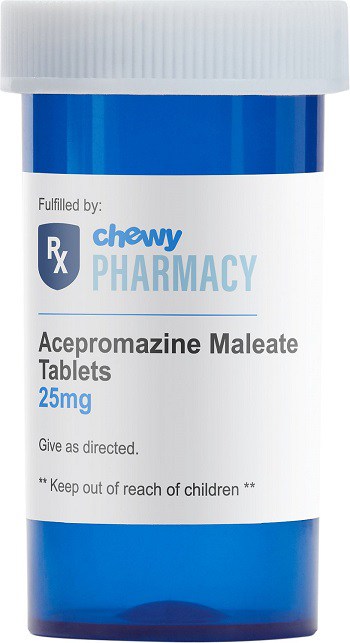
It can be given by tablet or by injection, depending on your vet’s final call.
If your dog were to take acepromazine, they could experience[7]:
- Low blood pressure
- Hyperactivity
- Temporarily discolored urine
Try over the counter options before asking your vet about this prescription medication, as they’ll most likely advise you to use more common forms of sedation first.
Alternative Options
If you decide that you’d rather not sedate your dog, here are a few alternative options you can try so the nail trimming process is easier for everyone.
Invest in a Nail Grinder
Nail grinders have rotary barrels that act as sandpaper against your dog’s nails.
They vibrate and make a bit of noise, but there’s no clipping involved.
Many dogs find this to be an easier option, once they get used to the sound of the nail grinder.
Not all nail grinders are equal, so do your research and use the best nail grinder for your dog.
Use a Collar Stand
Most groomers use a collar stand to hold dogs still while they trim their nails.
You can get one that hooks up to a floor-based stand or one that attaches to a wall.
Set Up a Sling
If your dog will still squirm around in their collar stand, you can set up a sling to keep them still.
It offers more full-body control without restraining your dog in an uncomfortable way.
For more information on this method, check out our guide on how to restrain a dog to clip it nails.
Try Treat Training
After every snip of the nail cutter, give your dog a treat and remind them how great they are so they learn nail trimming isn’t so bad.
Try starting this training when you use the nail clippers in the air.
They’ll see that the clippers pose no danger and the sound is nothing to be afraid of.
Buy a Body Wrap
A body wrap, also known as an anxiety or pressure wrap, is a weighted or tight jacket that wraps around your dog’s body.
It slows down their heart rate and makes them feel safer, much like a weighted blanket does for humans.
Secure your dog in a body wrap and see if they stay still during nail trimming.
Conclusion
Sedation helps many dogs get through nail trimming sessions, but it’s also not your only option.
Once you think about the pros and cons of sedation and decide if it’s right for your dog, you can explore other options if needed.
Always consult your dog’s vet if you have any questions or concerns about how sedation could affect your dog’s health.
References
- https://www.akc.org/expert-advice/health/treating-dog-anxiety/
- https://www.news-medical.net/health/What-is-the-Difference-Between-Sedation-and-General-Anesthesia.aspx
- https://www.akc.org/expert-advice/health/what-to-know-about-anesthesia/
- https://www.merckvetmanual.com/pharmacology/systemic-pharmacotherapeutics-of-the-integumentary-system/antihistamines-for-integumentary-disease
- https://www.akc.org/expert-advice/health/benadryl-for-dogs/
- https://www.veterinaryplace.com/dog-medicine/dramamine-for-dogs/
- https://vcahospitals.com/know-your-pet/acepromazine

